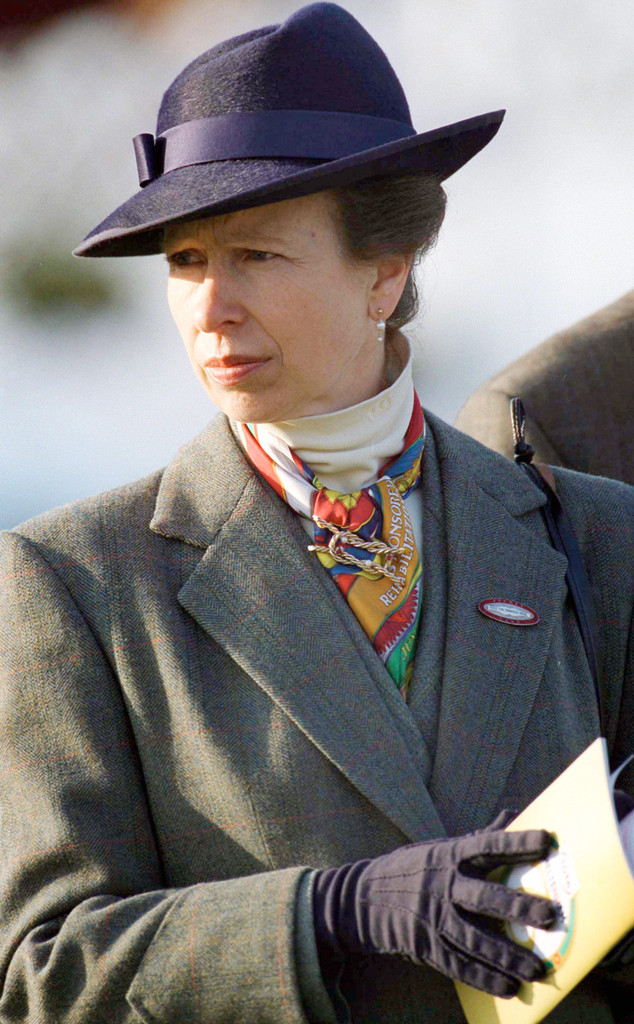
Tim Graham/Getty Images
On March 20, 1974, Princess Anne was almost kidnapped.
The only daughter of Queen Elizabeth II and Prince Philipwas on her way to Buckingham Palace with her then-husband Mark Phillips after a film screening when their maroon Rolls Royce was waylaid on the Mall by a white Ford Escort.
Anne’s Scotland Yard-issued bodyguard, Inspector James Beaton, got out of the car and was shot in the shoulder by Ian Ball, a 26-year-old unemployed laborer from north London. Beaton fired back once but then his gun jammed. Ball approached the Rolls and ordered Anne to get out—or he’d shoot.
“Bloody likely,” the 23-year-old princess retorted.
Ball ended up shooting chauffeur Alexander Callendar in the chest and Beaton, who managed to get back into the car to shield the royal couple, was hit again in the hand. Ball grabbed Anne by the arm and Phillips—”I was frightened, I won’t mind admitting it,” he later said—held onto her by the waist. Her dress was ripped down the back in the struggle.
“That was his most dangerous moment,” Anne quipped in an interview years later.
Ball also shot Police Constable Michael Hills, the first cop on the scene, who radioed for more help as he fell. By then, other motorists had stopped, including Daily Mail journalist John Brian McConnell, who recognized the royal insignia on the Rolls. Ball shot him too. Another passerby, Ronald Russell, a 6’4 former boxer, not realizing this was any more than a dust-up over a car accident, approached Ball from behind and clocked him in the head. Anne took the opportunity to open the opposite rear door and do almost a backward somersault out of the car.
She craftily thought that might get Ball to abandon his position, which he did, and as he ran toward the other side of the car, she got back in and closed the door. Russell managed to land a punch to Ball’s face, after which he took off running. Detective Constable Peter Edmonds caught up and tackled him in St. James’ Park.
Days later, the Marxist-Leninist Activist Revolutionary Movement sent a letter to authorities taking credit for Ball’s brazen actions, but Scotland Yard determined the kidnapping attempt was the act of one mentally ill individual—albeit a prepared one.
In the car, rented under an assumed name, Ball had stashed Valium, two pairs of handcuffs and a ransom note addressed to the queen demanding £2 million. Ball pleaded guilty to attempted murder and kidnapping and was sentenced to spend life in a mental health facility.
All of the wounded men survived and each was honored by the queen that September, as was Glenmore Martin, another chauffeur who blocked the Escort with his car so Ball couldn’t drive away.
Russell recalled getting the George Medal from the queen, telling the Eastern Daily Press in 2006 that the monarch told him, “‘the medal is from the queen of England, the thank you is from Anne’s mother.'”
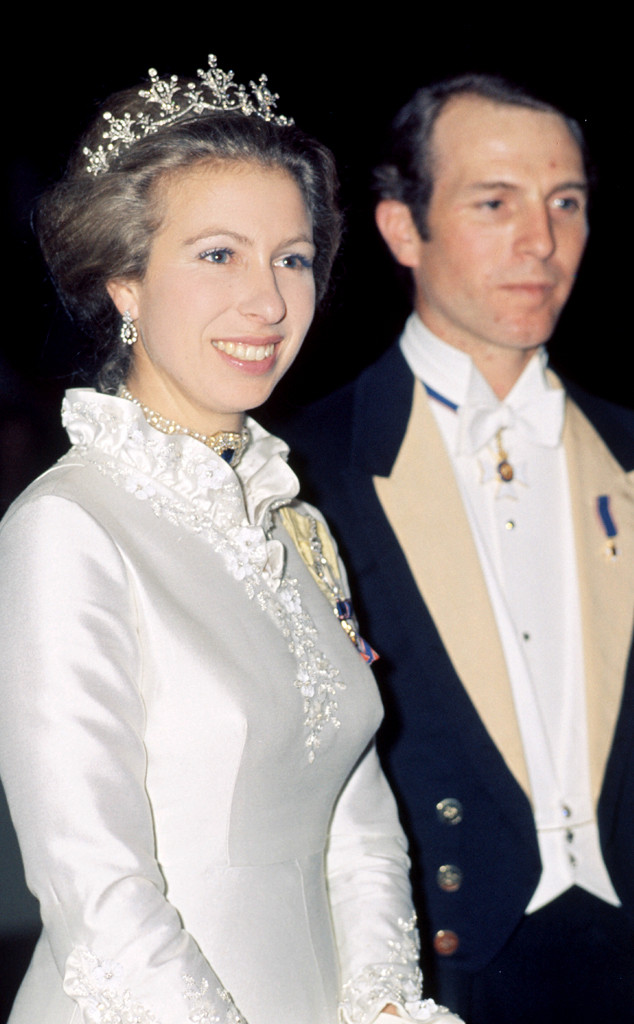
Reginald Davis/REX/Shutterstock
“We had a sort of discussion about where or where not we were going to go,” Anne said humorously, recalling her exchange with Ball in an interview with Michael Parkinson in the 1980s, prompting laughter from the audience. “Well, he said I had to go with him—I can’t remember why,” she added facetiously, turning to Phillips. “You were quite obstinate about it,” he added. “I said I didn’t think I wanted to go,” the princess said, smiling. “I was scrupulously polite, ’cause I thought, silly to be too rude at that stage.”
The audience was in stitches.
“And we had a fairly low-key discussion about the fact that I wasn’t going to go anywhere, and wouldn’t it be much better if he went away and we’d all forget about it.” She asked Phillips, “It got slightly rougher, didn’t it, at one stage?”
“I mean, public figures have always been in danger to some degree…” the ever-unruffled Anne continued. Though myriad threats were directed at the royal family over the years, she mused, “perhaps your greatest danger is still the lone nut case who has just got enough to put it together. But it would be fair to say that if anybody was seriously intent on wiping one out, it would be very easy to do.”
The party line shortly after the attack was that the royal family “had no intention of living in bullet proof cages,” least of all Anne, who resumed her usual routine the next day.
The unflappable princess is played by Erin Doherty in season three of The Crown, streaming now on Netflix, and the British actress unsurprisingly became quite enamored with the acerbic Anne while researching the role.
“I don’t think she’s trying to be mean,” Doherty explained to Vanity Fair. “She’s just kind of like, No, I’m going to tell you what I really think of this and you’re going to have to handle it. Because I’m not going to lie. I love that about her.”
This season picks up the royal saga in 1964, with a teenage Anne already needing to develop the suit of armor she would need to march into the existential battle that is her daily life as a full-time royal.
“What fascinated me and shocked me the most about Anne is that she was put under so much scrutiny—in particular about her physically when she was a teenager,” Doherty said. “Because she’s in the royal family, everyone just thinks they’re allowed to comment. She would’ve been this really young, fragile teenager and people would write things in the newspaper about her being frumpy. That surprised me—that she managed to go through that at such a young age and still come out really determined to be honest and open with people.” Speaking about Princess Anne’s guarded nature, Doherty explained, “I think that’s where the armor came from—because she was subject to this pressurized environment of people commenting on her.”
The steely resolve that has defined the monarchy for generations positively courses through the Princess Royal, who despite having her fortunes inextricably tied to her storied heritage has managed to live life largely on her own terms, lone nut cases—or public opinion—be damned.
So it’s no wonder she’s always been one of the most popular members of the family.

Press Association via AP Images
Anne was born on Aug. 15, 1950, joining 1 1/2-year-old brother Prince Charlesin the family fold. That November, then-Princess Elizabeth returned to Malta to be with her husband, who was still stationed there with the Royal Navy, while the children remained in England with their grandparents (Anne and Charles would remain close with the Queen Mother for the rest of her life).
In 1952, their mother became queen when her father, King George VI, died. The following year, Queen Elizabeth II and Prince Philip embarked on a nearly seven-month-long tour of the commonwealth, again without their children—who were famously greeted with handshakes upon their parents’ return.

Lisa Sheridan/Studio Lisa/Getty Images
Charles enjoyed a special bond with his bold, confident sister, who was eight years older than their next-youngest brother Prince Andrew. Prince Edward arrived four years after Andrew, and the 12- and 16-year gaps between Charles and his brothers assured they were never as close. The sensitive, artistically inclined Charles felt the weight of his parents’ frequent absences, but if Anne ever felt similarly, she’s not saying.
“Her predecessors had traveled enormously, that was the expectation,” Anne summed up her mother’s commitment to the crown in an interview for the BBC’s The Queen: Her Commonwealth Story, which aired in March. “And they’d been away for very long times and that again was part of the expectation…And of course it was made worse by her father dying so early on in her career that she didn’t have the option really to spend more time at home.”
The stoic princess, who was quick to defend their mother when Charles told an interviewer in the 1990s that the queen was a distant parent—it “just beggars belief,” Anne fired back—was more like their father than Charles was, and Philip appreciated his daughter’s athleticism, fearlessness and dry wit.
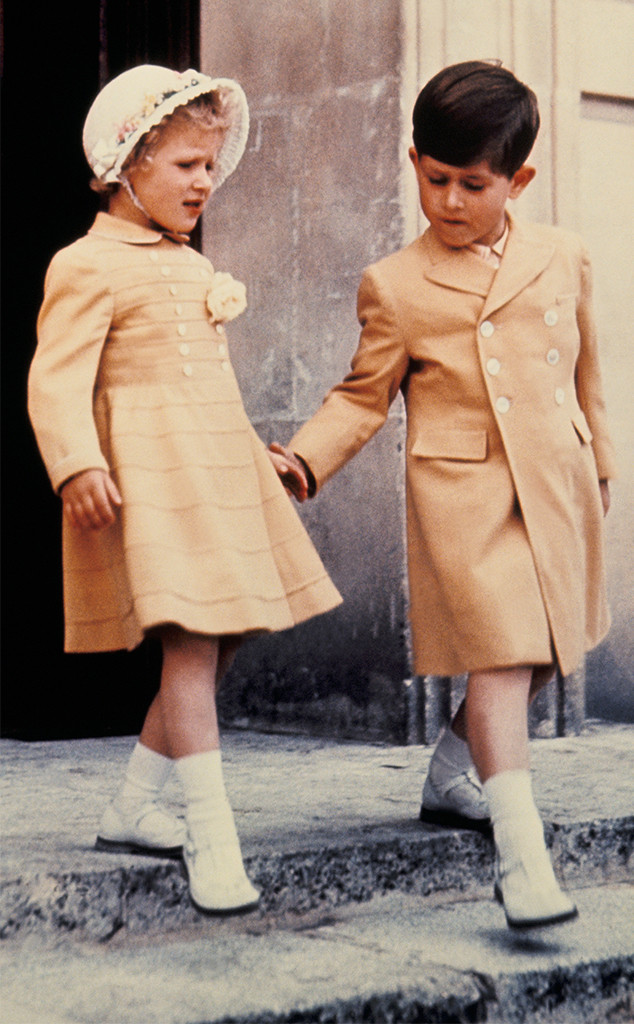
Getty Images
“She’s got the same quick brain as the Duke of Edinburgh and doesn’t suffer fools,” Lord Patrick Beresford, a friend of Anne and Phillip, told royal biographer Sally Bedell Smith.
But while their temperaments differed, Anne was there for Charles, attending his plays at boarding school and, once they were older, hitting the international circuit with him to represent Britain, including a trip to Washington, D.C., in 1970 (during which President Richard Nixon tried to set the prince up with his daughter Tricia Nixon). Anne also gave him riding lessons when, as an adult, he wanted to get over his fear of jumping so he could join in traditional foxhunts.
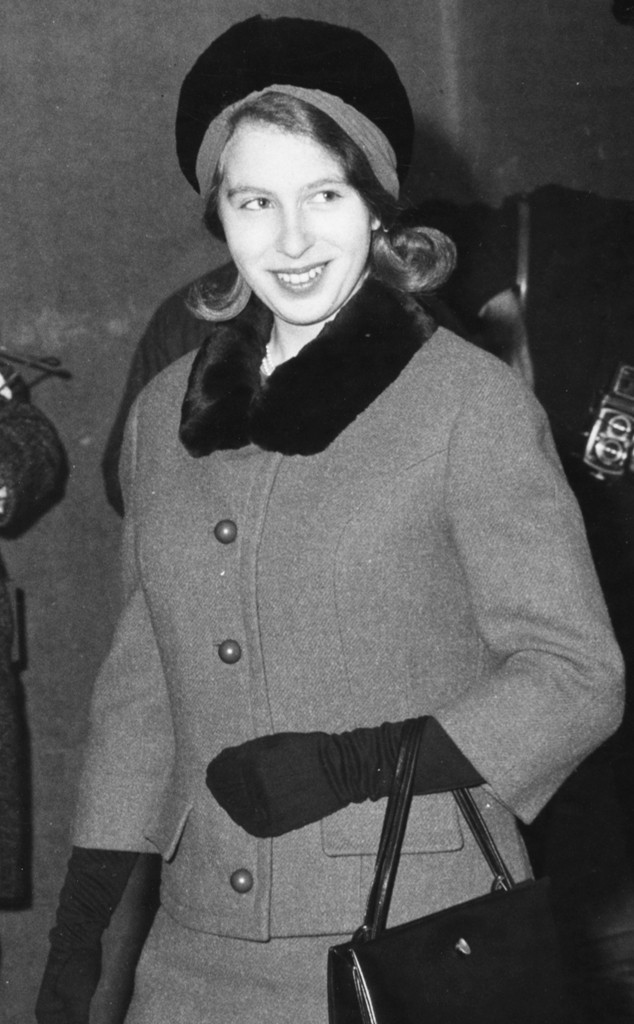
Fox Photos/Hulton Archive/Getty Images
Anne shared a particular love of horses with the queen, a love that she in turn would pass on to her own daughter. She forewent university in favor of pursuing her equestrian career and won the European Eventing Championship in 1971, after which she was named BBC Sports Personality of the Year.
Anne met champion rider Mark Phillips, then a lieutenant in the British Army, during the 1968 Summer Olympics in Mexico and they bonded instantly, traveling to events together all over England. He won a gold medal in three-day eventing at the Munich Games in 1972 and they got engaged in April 1973, after both competing in the horse trials at Badminton. Their betrothal was formally announced on May 29, 1973, and Anne’s parents were said to be “delighted.”
But not everyone was thrilled.
“I can see I shall have to find myself a wife pretty rapidly, otherwise I shall get left behind and feel very miserable,” Charles wrote to a friend upon hearing the news, per Bedell Smith’s 2017 biography Prince Charles. However, his sister’s engagement wasn’t the only one plaguing the bachelor.
Four months before Anne got married on Nov. 14, 1974 (Charles’ birthday), his charming former girlfriend Camilla Shand married Andrew Parker-Bowles. The dashing British Army officer had previously dated Anne and, remaining friends, Anne was in the front row along with the Queen Mother at Andrew and Camilla’s July 4 wedding.
Not being able to predict the future, Charles felt as if he was losing two of the most significant relationships in his life.

Press Association via AP Images
A record 500 million people watched on TV as Anne married Phillips in front of roughly 2,000 guests. More than 10,000 people camped out along the procession route between Buckingham Palace and Westminster Abbey to get a glimpse of the couple. They chanted “we want Anne!” and sang “Happy Birthday” for Charles. The bride wore a tudor-style gown by Maureen Baker. To go with her sapphire and diamond engagement ring, her wedding band was crafted from the same nugget of Welsh gold that supplied rings for the Queen Mother, the queen and Princess Margaret and, later, would do the same for Princess Diana, Kate Middleton and Meghan Markle.
The queen gifted the newlyweds Gatcombe Park, a country estate in Gloucester, and they divided their time between that home, Anne’s bachelorette apartment at Buckingham Palace and Phillips’ military posting at Sandhurst.
Perhaps contrary to expectations at the time, the couple didn’t set about to have children right away. Riding her horse Doublet, Anne won silver medals in both individual and team disciplines at the 1975 European Eventing Championship, and she competed in the 1976 Summer Olympics in Montreal, becoming the first member of the British royal family to be in the Olympics. She recalled the “sea of hats” at the Opening Ceremony.

Keystone-France/Gamma-Keystone via Getty Images
On the second day of the three-day eventing, Anne fell off her horse—Goodwill, from the queen’s stable—and suffered a concussion. She got up again to jump the next day, but she matter-of-factly said later that she didn’t remember much of it. “Trying to contain his enthusiasm was a bit of a struggle,” Anne said of Goodwill. “He also had a very positive attitude across the country [portion of the ride]…he was always on the edge of being ‘I don’t want to be here.'”
“I don’t remember much about the course at all, which is slightly irritating,” she told the BBC in 2011. “My father went back to look afterward and he found four huge holes about 3 strides out from the fence…what he’d done is [Goodwill] got bogged, basically…At least we landed the right way up, because that’s the sort of fall that does a lot of damage.” As a friend told her at the time, after the fall “the lights were on but no one was home.”
Despite her reputation for being extremely competitive, Anne insisted that being an Olympian at all, and finishing the event, was satisfying.
Anne and Mark’s first child, son Peter Phillips, was born on Nov. 15, 1977, and daughter Zara Phillipsarrived on May 15, 1981—another busy year for the royal family.
Charles had started courting 19-year-old Lady Diana Spencer in the summer of 1980 and they announced their engagement in February 1981. They married on July 29, 1981. After a months-long honeymoon, they installed themselves at Kensington Palace.

Getty Images
Diana and Anne couldn’t have been more different, with Diana being far more interested in having a good time and Anne being a no-nonsense outdoorswoman who didn’t care about clothes (she’s been known to recycle decades-old ensembles) or the frou-frou trappings of royal life, keeping a spare staff and not fretting over mud tracks in the kitchen. Anne’s favorite dish as a teenager was traditional fish and chips and she preferred similarly no-frills food as an adult. She reads Horse and Hound religiously. She drinks coffee all day and enjoys a martini at night.
“If it doesn’t fart or eat hay, then she isn’t interested,” Prince Philip once said of his daughter.
It is when she talks about riding that her enthusiasm cracks through her unimpressed facade. “Good question and how long have you got?” she replied when a BBC interviewer asked about the magic of three-day eventing, which entails dressage, a cross-country ride and show-jumping.
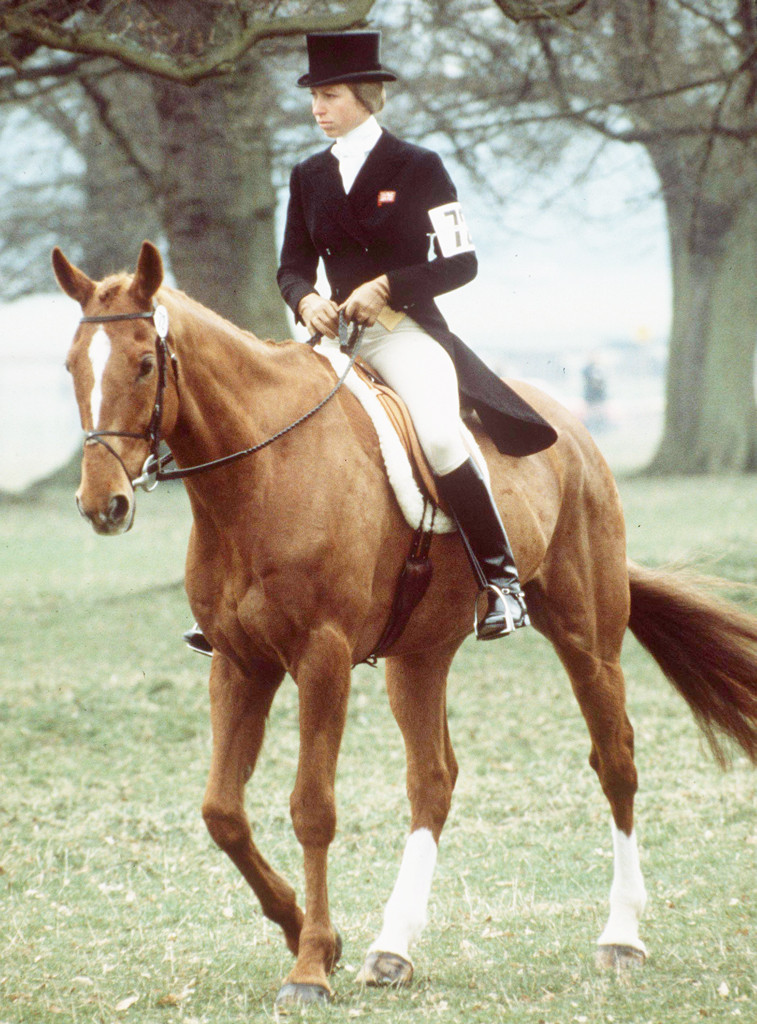
Tim Graham/Getty Images
“It was based on a historical military perspective that was based on having a horse that was obedient, well-trained, brave enough to cross any piece of country that they were asked to cross,” Anne explained, “but also fit enough to fight the next day.”
Sounds like an event the royals would like.
Anne loaned her brother the Shetland pony that Prince William used for his first riding lessons and one of her ladies-in-waiting, Alexandra “Tiggy” Legge-Bourke, became a nanny for William and Prince Harry. But by the time Harry was born in 1984, the lack of a relationship between Diana and her sister-in-law, was apparent. Anne, rumored to be upset that she wasn’t named Harry’s godmother, did not attend her younger nephew’s christening.
The Palace denied that Anne’s absence was due to anything other than a previous engagement. But according to James Whitaker’s Diana v. Charles, Diana reacted to the suggestion of Anne as godmother with, “I just don’t like her. She may be wonderful doing all the charity work for Save the Children and others, but I can do it as well.” Whitaker wrote that there was “no love lost” between them, and Anne called her sister-in-law “the Dope.”
Also unlike Diana, Anne had no especial desire to be beloved and didn’t court the media’s attention.
The press at one point dubbed the queen’s daughter “Her Royal Rudeness.” According to Princess Diana biographer Tina Brown, when Anne was introduced to Tony Blair‘s wife, Cherie Blair told the princess to call her Cherie, to which Anne replied, “Actually, let’s not go that way. Let’s stick to Mrs. Blair, shall we?”
Anne very visibly (and sometimes audibly) had little patience for lengthy photo opportunities or other pomp amid the circumstance. To this day she doesn’t shake hands with the people, explaining in the ITV documentary Queen of the World that it was against protocol back in the day when the family started doing walkabouts (rather than just waving from passing cars) in or around 1970.
“The theory was that you couldn’t shake hands with everybody, so don’t start,” the now 68-year-old royal said with a smile. “So I kind of stick with that, but I noticed others don’t. It’s not for me to say that it’s wrong, but the initial concept was that it was patently absurd to start shaking hands.”
And the walkabouts themselves were bothersome enough for her.
“We hated them,” Anne—who in the 1970s was overheard lamenting “this bloody wind” (basically dropping an F-bomb) during one such walkabout in Australia—said in an interview for the . “I mean, can you imagine as teenagers? It’s hardly the sort of thing you would volunteer to do. I mean it gets easier but, can you imagine? I mean how many people enjoy walking into a room full of people that you’ve never met before? And then try a street. I don’t think many youngsters would actually volunteer to do that.”
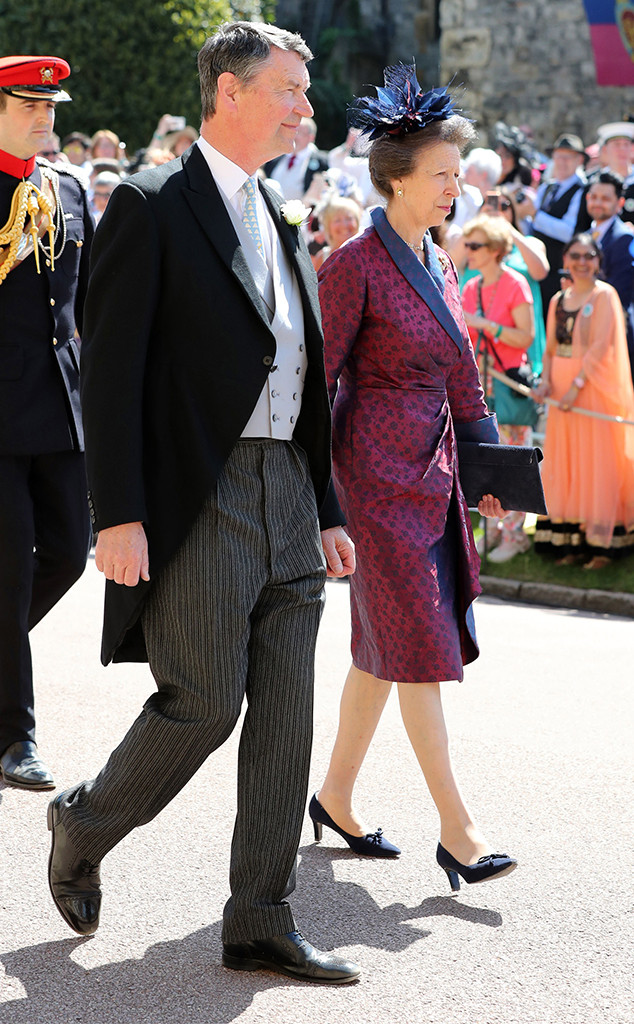
Gareth Fuller – WPA Pool/Getty Image
Anne also has no problem with the no-selfie rule—and you better put your phone down if you want a few words with the princess.
“Phones are bad enough, but the iPads—you can’t even see their heads,” she chides the chronic picture-takers she inevitably sees at events. “No idea who you’re talking to.”
If someone approaches to talk with phone in hand, Anne says, “I either don’t bother, or just say, ‘Look, if you want to ask, I suggest you put that down. It is weird. People don’t believe they’ve experienced the event unless they’ve taken a photograph.”
Despite what can be perceived as a grain-of-salt demeanor at times, Anne has been ragingly consistent in her commitment to the crown. Asked by the BBC in 2010, when she turned 60, if she had any plans to slow down, she replied, “Look at the members of my family who are considerably older than me and tell me whether you think they have set an example which suggests that I might. Unlikely.”

Max Mumby/Indigo/Getty Images
And she’s been the busiest royal bee of them all, logging 640 official engagements in 2016, more than Prince William, Prince Harry and Kate Middleton combined. In 2017 her 541 engagements were barely second to Charles’ 550, the Prince of Wales having the weight of future-king expectations increasingly upon him—but Anne topped ’em all again in 2018 with 518 engagements to Charles’ 507 amid an overall uptick in royal activity.
Anne is also the patron of numerous charities and organizations, like the rest of the royals, but she has notably been president of Save the Children since 1970 and president of Riding for the Disabled since 1985.
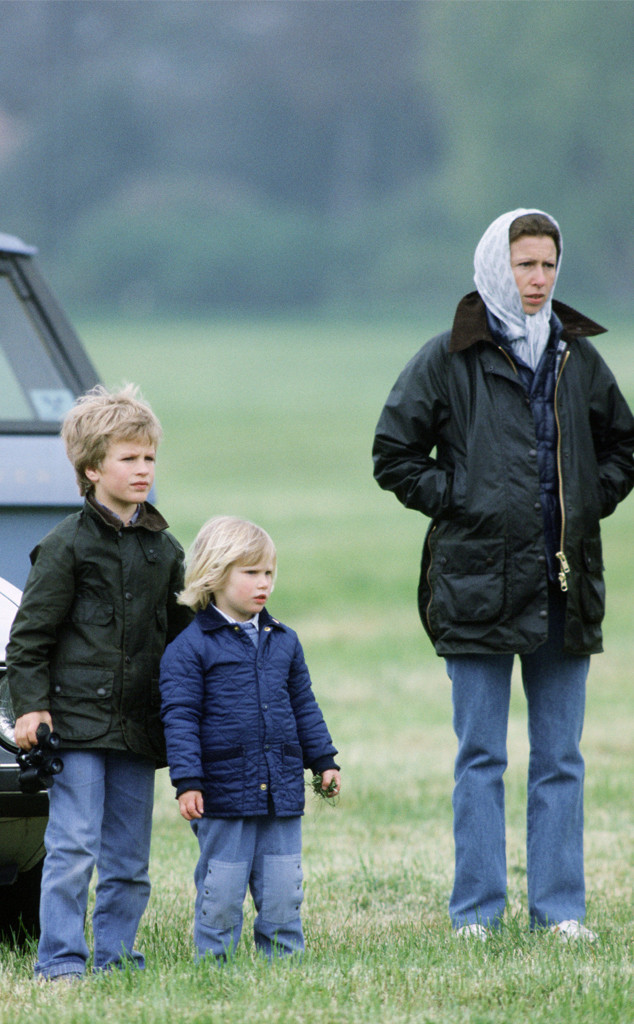
Tim Graham/Getty Images
Asked if becoming a mother had influenced her advocacy, Anne said in a 1983 interview, “Yes, but I would also remind you that I took on the fund long before I even thought about getting married…Having my own children I don’t think has made that much difference. I may understand their problems a bit better than I did before.”
She was also asked if, having seen deprivation in the developing world, she worried about what sort of world her own children would grow up in?
“In the so-called developed world?” she replied wryly.
Her own children at least grew up in a very evolved world, for a couple of royals. Breaking with all sorts of tradition, Anne chose to not give Peter and Zara royal titles at birth, figuring they’d have a better shot at normality if they were just Peter and Zara, no prince or princess, no HRH (or, like mum, HRR).
Peter and Zara would get grounded if they ran afoul of their parents, and allowances would be withheld.
“I’m very lucky that both my parents decided to not use the title and we grew up and did all the things that gave us the opportunity to do,” Zara told The Times in 2015.
Meanwhile, Anne’s determination to live an independent life eventually extended to her marriage. She and Mark spent a lot of time apart and in 1989—amid reports that Anne had been exchanging amorous letters (which were stolen and leaked to the press) with Royal Navy Commanding Office Timothy Laurence—they announced that they had separated. Just like any savvy celebrity, the princess wasn’t in England when the news was announced, but instead in Puerto Rico for a meeting of the International Olympic Committee.
The initial statement from the Palace noted that they had no plans to divorce, but they eventually did so in April 1992—amid what the queen later dubbed her “annus horribilis,” as it was also the year Andrew and his wife Sarah Ferguson, Duchess of York, separated, followed that December by Charles and Diana.
Even Anne, for all her lack of affection for Diana, had considered telling Charles—who had resumed his affair with Camilla—that he was behaving abominably toward his wife, according to Tina Brown’s The Diana Chronicles. That didn’t stop Anne, though, from inviting old friend Andrew Parker-Bowles to be her guest at the Royal Ascot that year.
“You see them together at Royal Ascot every year and they are best friends,” royals writer Phil Dampier told the IB Times UK in 2017. “He was her first love and their bond goes very deep. It was a weird royal set-up which Diana went into not realizing the depth of the relationships.”

Nicholas Read/Shutterstock
Anne married Laurence three months after her divorce was finalized, in a small church ceremony in Scotland. Zara was her bridesmaid. The queen and Philip were there, as was the Queen Mother. Prince Edward, still a bachelor at the time, was the only brother who attended, the wedding occurring days after Charles and Diana announced their separation. Diana sent her best wishes to the newlyweds.
Like Mark Phillips before him, Laurence didn’t take a royal title, but he was knighted by the queen in 2011, and he’s still mixing Anne’s nightly martinis to this day. (And it’s not as if she pinches all her pennies. The couple sail the Scottish Isles every summer aboard their £500,000 yacht, Ballochbuie.)
Anne’s son, Peter, played rugby at Exeter and has worked in sports management, hospitality and finance. He had a few relationships before settling down with wife Autumn in 2008.
Daughter Zara also went to Exeter, where she studied physiotherapy, and in 2003 secured her first riding sponsorship.
Anne’s children are also very close to William and Harry, who enjoy the company of their older, refreshingly unaffected cousins. When Diana died in 1997, Anne particularly wanted to ensure that 12-year-old Harry had all the family support he needed. She called on Peter and Zara to keep him company at Balmoral and also spent time with him herself, riding and rambling in the woods.
Though Anne was often reported to be annoyed by Zara’s longtime boyfriend Mike Tindall‘s headline-grabbing antics, usually involving his behavior at bars or on the rugby pitch, the princess and her son-in-law have since looked thick as thieves out in public, particularly at sporting events. Sharing a ribald sense of humor and, more importantly, a love of sports presumably helps.

Samir Hussein/Getty Images
When Zara called her mother to tell her that Mike had proposed, Anne asked if he was going to finally get his perennially broken nose fixed.
“She’s very knowledgeable about the game,” Tindall, who captained England’s rugby team, said about his then-future mother-in-law in 2011. “She probably knows more about it than me…We talk about rugby and the princess royal follows my club, Gloucester, as well. But she is passionate about Scottish rugby, so I’m sure she’ll be delighted if they put one over us.”
Anne is now a hands-on grandmother to Peter’s daughters, Savannah Anne and Isla Elizabeth, and Zara’s daughters MIA and Lena.
“I look at her and just think if I was going to be a mother, that’s what I would want to be like,” Zara said in a 2010 BBC special in honor of her mother’s 60th birthday. “I would like to be as good a mother as she has been to us.”
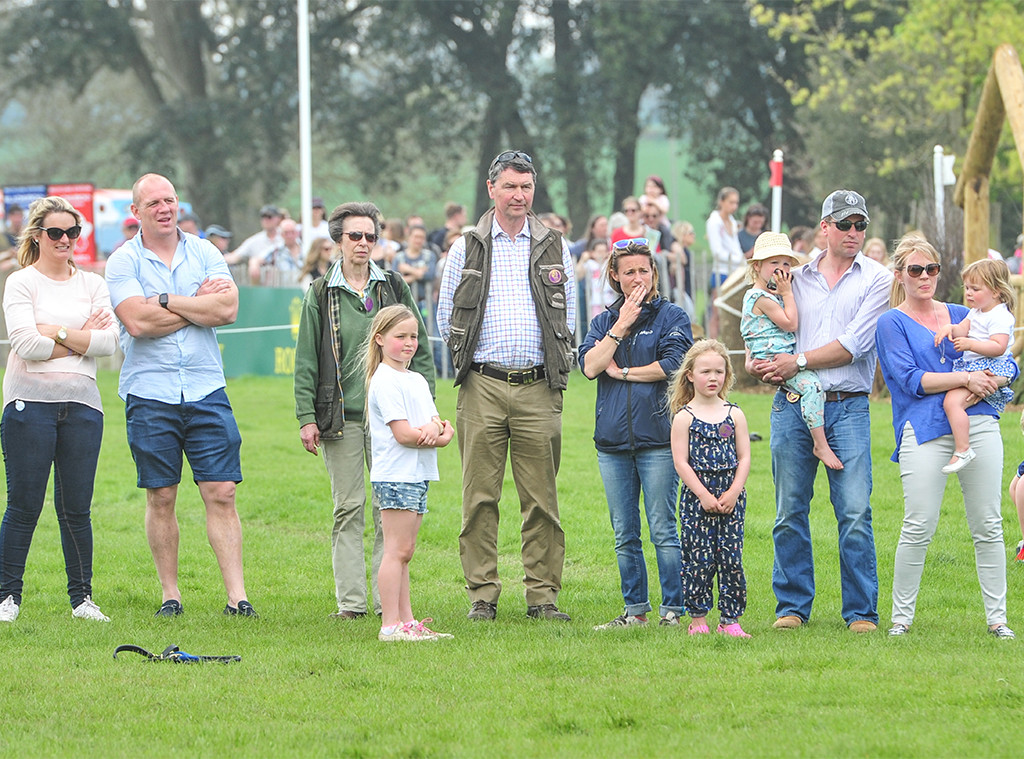
Barcroft Media/Getty Images
Said Peter Phillips, “Her advice generally about life has been invaluable. Whenever we may have got slightly above our station she’d be the first one to bring us back down to earth.”
“When she’s in an environment of people that she knows,” he added, “whether it be her organizations or family, friends, she definitely relaxes a lot more and is great fun and is always the one laughing the loudest.”
“She loves a good dance,” Zara noted. “She is good on her feet.”
Zara, named BBC Sports Competitor of the Year in 2006, competed in the 2012 Summer Olympics in London, and had the honor of accepting a silver medal in team eventing from her mom.
(Originally published Oct. 1, 2018, at 3 a.m. PT)
